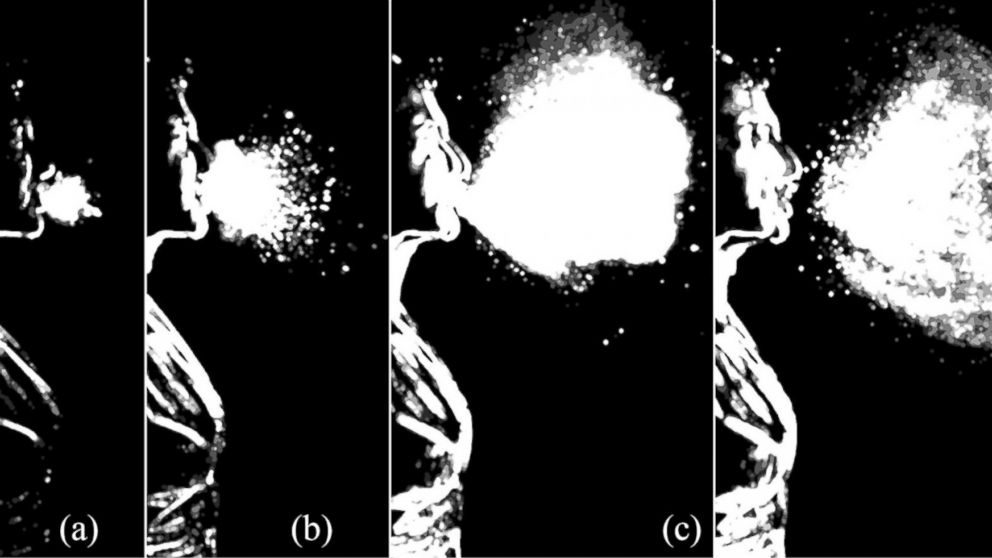High-Speed Images Freeze the Sneeze and Help Explain the Spread of Germs
MIT scientists looked at sneeze "splatter" to explore how germs are spread.

— -- In case you needed another reason to fear flu season, researchers from MIT released new pictures showing the physics behind sneezing.
Just a warning, there's a lot of splatter.
The researchers used high-speed cameras and examined 100 sneezes from three healthy subjects. Their goal was to photograph the split second when the sneeze hits the air to see just where those droplets end up.
Researchers found that instead of a uniform cloud of droplets, a single sneeze would fragment in the air similar to paint being flung onto a canvas, the researchers said.
“It’s important to understand how the process of fluid breakup, or fluid fragmentation, happens,” said Lydia Bourouiba, the Esther and Harold E. Edgerton Assistant Professor in the Department of Civil and Environmental Engineering and head of the Fluid Dynamics of Disease Transmission Laboratory at MIT.
Part of the mission was to explore the physics of "droplet size distribution, and the resulting prediction of the downstream range of contamination,” Bourouiba said in a statement.
The researchers were surprised to see that fluid from a sneeze can balloon into the air before bursting into tiny filaments.
“What we saw was surprising in many ways,” Bourouiba said. “We expected to see droplets coming out fully formed from the respiratory tract. It turns out that’s not the case at all. And this gives us a good baseline to expand our mechanistic understanding of violent expirations.”
By seeing how a sneeze travels, Bourouiba said researchers will have a better understanding of how a disease can spread through a population.
Dr. Frank Esper, a pediatric infectious disease specialist at University Hospitals Rainbow Babies, said the study give a clear example of why it's so important to cover your nose and mouth with your elbow or sleeve.
"This is goes to show why the germs are so transmissible just like paint it can splatter," said Esper, who was not involved in the MIT study. "This is still a 2-D image. You don’t get the depth. Its cone of splatter and cloud of splatter [a 3-D image] would truly show you why the flu is able to go through schools and daycare and your home so quickly."




